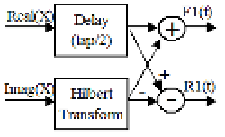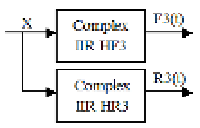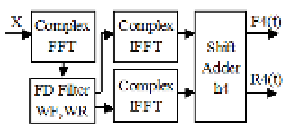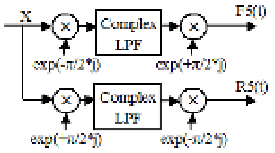Image Processing Reference
In-Depth Information
Frequency resolution:
Since spectrum image signal processing involves 256-point FFT, an acceptable frequency
(velocity) resolution is obtained. However, when the frequency resolution of the Doppler
audio is unacceptable, similar to that of a small-pitch Doppler image, we set the target
resolution to be
fs
/100. The frequency range is determined from sample frequency.
However, the frequency resolution is proportional to the reciprocal of observation time. For
example, in FFT, it is equivalent to the main robe width of the sampling function
determined from observation time width and the window function.
Calculation load:
Although operation load is dependent on the hardware-architecture, such as DSP, ASIC,
and FPGA, lighter load is more advantageous to cost, size, and power consumption in
common.
3.2 Six kinds of digital signal-processing ideas
Six kinds of digital signal-processing systems that were pre-existing or newly devised are
examined. They are shown in Fig. 6.
(a) the Hilbert transform system
(b) the complex FIR system
(c) the complex IIR system
(d) the FFT/IFFT system
(e) the modulation/demodulation system
(f) the phase-shift system
Fig. 6. Six kinds of digital signal-processing systems
Hilbert transform system:
The delay of (filter tap length)/2 is given to I-channel of IQ-signals. It and the Hilbert
transform output of Q-signal are subtracted or added. The direction separated signals are
calculates by formulas (9) and (10). Here a convolution is indicated . The tap number is
set to 128 in the estimation of the calculation load shown in Table 3.
Fn
1(
)
Re
Xnntap
(
/ 2 )
Im
Xn
(
)
h ntap
1(
)
(9)
Rn
1(
)
Re
Xn ntap
(
/ 2 )
Im
Xn
(
)
h ntap
1(
)
(10)
The coefficient
h1
of Hilbert transform is given by a formula (11).







